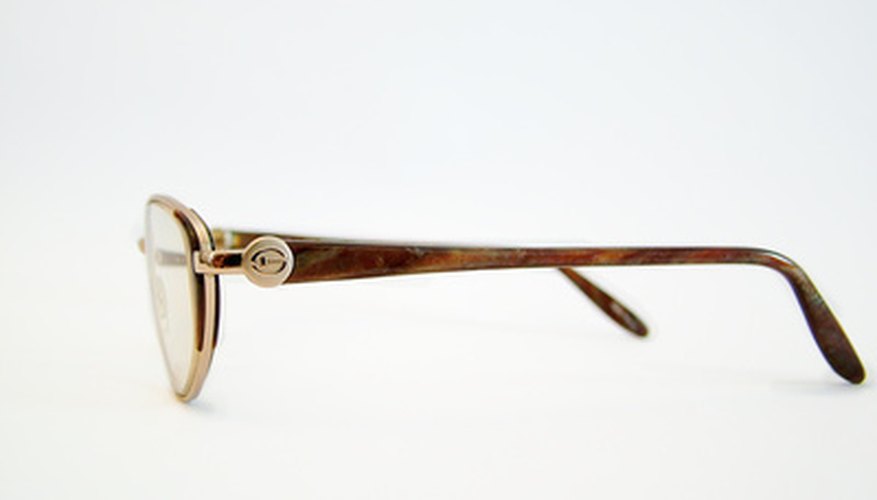A trifocal lens aids patients who suffer from increased presbyopia and require vision correction for intermediate distances. Presbyopia is a condition also known as "old-age sight." Increased presbyopia requires more than a +2.00D addition. Correct placement of the lens is essential to the patient's comfort. The necessary measurements for a trifocal lens include the pupillary distance, optical centre height and segment height.
- A trifocal lens aids patients who suffer from increased presbyopia and require vision correction for intermediate distances.
- The necessary measurements for a trifocal lens include the pupillary distance, optical centre height and segment height.
Measure the patient's pupillary distance (PD) using the corneal reflex pupillometer or millimetre ruler. The pupillary distance determines the measurements for the centre of the patient's pupil or visual axis.
Measure the pupillary distance monocularly, from the centre of the nose to the right pupil and then the left pupil, or binocularly, from the centre of one pupil to the other.
Rest the ruler on the patient's nose for extra support when taking measurements. A crooked ruler results in inaccurate measurements.
Direct the patient to put on the frames in typical fashion. The optical centre height measurement requires the interplay of the eye and the lens to formulate correct measurements.
Make a dot on the lens marking the centre of the pupil. You want to see the position of the visual axis on the lens.
- Measure the pupillary distance monocularly, from the centre of the nose to the right pupil and then the left pupil, or binocularly, from the centre of one pupil to the other.
- Make a dot on the lens marking the centre of the pupil.
Take the B measurement using the millimetre ruler. The B measurement measures the vertical distance from the top to the bottom of the frame.
Halve the B measurement. Halving the B measurement gives you the middle part of the lens, which you want to mark. Compare the dot marking the pupil to the halved B-measurement mark; they should be within five mm of each other.
Measure the distance from the pupil dot to the bottom inside part of the frame, which gives you the OC height.
Hold up the millimetre ruler vertically across the frame so that the starting "0" measurement is at the bottom of the pupil and the rest of the ruler crosses the bottom frame of the glasses. The segment height determines the correct location of the trifocal lens on the frame.
- Take the B measurement using the millimetre ruler.
- Hold up the millimetre ruler vertically across the frame so that the starting "0" measurement is at the bottom of the pupil and the rest of the ruler crosses the bottom frame of the glasses.
Measure the distance from the starting point to the very bottom inside part of the frame of the glasses. The segment height is unique for each pair of lenses because the distance from the bottom of the pupil to the bottom of the frame is always different.
Record the measurement. The number should be in millimetres, and standard measurements range from 14 to 25 millimetres.
TIP
The patient needs to look directly at the target in the pupillometer when you measure the pupillary distance. When taking any of the three measurements, sit across from the patient at the same height. Any variations in height affect the measurements.
